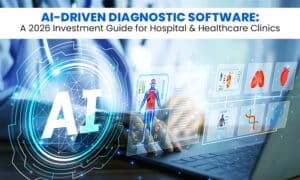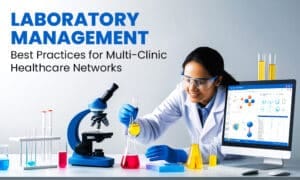
Imagine a patient walking into a clinic, armed with accurate information and a clear understanding of their medical history. This isn’t a fantasy; it’s the reality, as many doctors and hospitals strive to create. Preventing diagnostic errors is a crucial goal in modern healthcare. Diagnostic errors, though often unintentional, can have severe consequences. But what if we could proactively equip patients with the knowledge and tools to prevent diagnostic errors? At its core, this is what proactive patient education diagnostic errors aims to achieve. It shifts patients’ role from a passive one to an active partnership, ensuring they understand their patient role in diagnosis.
By fostering open communication, providing clear information, and guiding patients through the diagnostic process, hospitals can significantly reduce the risk of misdiagnosis.
Understanding Diagnostic Errors
Diagnostic errors occur when a diagnosis is missed, incorrect, or delayed, as detected by a subsequent definitive test or finding. These errors can result from various factors, including cognitive biases, system-related issues, and communication breakdowns among healthcare providers. One can prevent diagnostic errors by involving patients in their own medical care and significantly influence the accuracy and timeliness of diagnoses.

The Pitfalls of Self-Diagnosis and the Importance of Professional Guidance
In the age of readily available online information, patients often attempt self-diagnosis. While well-intentioned, this can lead to misinterpretations and delays in seeking appropriate medical care. Patients might focus on specific symptoms while overlooking crucial details. How patients can prevent diagnostic errors begins with understanding the limitations of self-diagnosis.
Physicians need to encourage patients to bring their researched information to appointments—not as a substitute for professional advice, but as a starting point for informed discussions. This involves educating patients on the importance of comprehensive medical evaluations and the pitfalls of relying solely on online symptom checkers. Patient education diagnostic errors strategies can help reduce these risks significantly.
Death and Permanent Disability Due To Diagnostic Errors
When it comes to the human lives crossing over due to diagnostic errors, it is challenging to provide a precise count. Some of the major reasons that hinder in keeping count of the lives lost annually are –
• Data Collection: Accurate tracking of diagnostic errors and the direct link to deaths is complex. The major reason for the complexity is due to various errors going unreported.
• Varying Definitions: Throughout various studies, definition of diagnostic errors changes. So, it becomes difficult in data comparison.
• Global Variability: The reporting system and healthcare systems vary significantly among countries. This makes unified global statistics elusive.
Diagnostic Errors: A Silent Epidemic
Diagnostic errors represent a critical public health crisis, with devastating consequences for patients worldwide. While global mortality figures are elusive, the impact in the United States is staggering. Recent research paints a grim picture, revealing that diagnostic errors may be a leading cause of death, potentially surpassing fatalities from other medical errors combined and rivaling heart disease and cancer.
Some of the key findings:
• Massive Mortality in the U.S.: A 2023 study estimated approximately 371,000 deaths annually due to diagnostic errors across all care settings.
• Significant Disability: These errors also lead to an estimated 424,000 permanent disabilities annually in the U.S.
• Even Higher Estimates: Another study in 2021 suggests a combined figure of 795,000 Americans experiencing death or permanent disability each year due to misdiagnosis.
• Global Impact: The World Health Organization (WHO) reports diagnostic errors occur in 5-20% of physician-patient encounters, indicating a substantial global burden.
• Critical Conditions: Major contributors to serious harm from misdiagnosis include stroke, sepsis, pneumonia, venous thromboembolism, and lung cancer.
• Clinical Judgment Failures: Failures in clinical judgment are a primary driver of these errors.
• Ubiquitous Errors: Errors occur across diverse healthcare settings, including primary care, emergency rooms, and hospitals.

The above table clearly shows the statistical data on the various deaths that occur due to diagnostic errors. In the US, these annual deaths not only lead to psychological distress but even economic liabilities in terms of legal suits.
Diagnostic Errors: The Hidden Economic Toll
Diagnostic errors aren’t just a healthcare problem; they’re a significant economic burden. While direct healthcare costs are easily measured, the indirect costs of lost productivity, often overlooked, are substantial. Misdiagnosis leads to prolonged illness, disability, and mental health issues, impacting individuals, employers, and the wider economy.
The major key economic impacts are:
• Prolonged Illness & Disability
- Delayed return to work.
- Increased illness severity, leading to potential disability.
- Reduced work capacity (presenteeism).
• Mental Health & Quality of Life
- Reduced work engagement and motivation.
- Increased absenteeism due to stress and depression.
- Cognitive impairment affecting productivity.
• Employer Costs
- Increased sick leave and temporary staffing costs.
- Reduced productivity among colleagues.
- Higher disability insurance premiums.
- Recruitment and training expenses for replacements.
• Patient & Family Financial Strain
- Lost wages.
- Increased economic strain.
• Quantification Challenges
- Precise figures are difficult to obtain due to indirect costs.
- Many studies indicate that indirect costs of medical errors often surpass direct costs.
In essence, misdiagnosis creates a ripple effect, eroding economic productivity at every level. Addressing diagnostic errors is a vital investment, yielding benefits for patient well-being and economic stability.
What Can Hospitals and Doctors Do?
• Educating Patients on Effective Communication
Effective communication is a cornerstone of accurate diagnosis. Doctors can educate patients on how to articulate their symptoms clearly, including the onset, duration, and intensity. Communicating symptoms effectively to avoid misdiagnosis is critical to ensuring doctors receive the necessary details to make an accurate diagnosis. Encouraging patients to share all relevant information, even if it seems minor, can provide crucial clues for accurate diagnosis.
• Discouraging Self-Diagnosis and Treatment
In the age of the internet, patients often resort to self-diagnosis and treatment, which can lead to misinformation and potential harm. Patient education diagnostic errors strategies should include emphasising the importance of consulting medical professionals for accurate assessments. Providing reliable resources and guidance can help patients navigate health information responsibly.
• Encouraging Second Opinions
Doctors and hospitals should normalise and encourage the practice of seeking second opinions, especially in complex or uncertain cases. This approach not only reassures patients but also provides an additional layer of scrutiny, reducing the risk of diagnostic errors. Asking and communicating with doctors to avoid misdiagnosis should be a routine part of patient visits, ensuring they receive thorough and accurate assessments.
• Implementing Continuous Education Programs
Continuous education programs for both healthcare professionals and patients are vital in keeping abreast of the latest developments in medical diagnostics. Hospitals can organise workshops, seminars, and informational sessions that educate patients about common diagnostic procedures, potential pitfalls, and the importance of accurate information sharing.

In the above infographic, it clearly shows that errors occur across diverse healthcare settings, including primary care, emergency rooms, and hospitals. These errors can be rectified and avoided with an in-depth and proper health education to critical and non-critical patients, ensuring that they are able to record the symptoms of their diseases and discuss them with their doctors.
• Utilising Patient Portals and Health Records
Providing patients with access to their electronic health records (EHRs) through secure patient portals enables them to review their medical information, test results, and treatment plans. This transparency allows patients to identify any inaccuracies and engage in informed discussions with their healthcare providers, thereby reducing the likelihood of diagnostic errors. To know more about the benefits of advanced EHRs and patient portal, check out the features of Ezovion Hospital Management System.
Empowering Patients for Safer Diagnoses
Proactive patient education is a collaborative effort that requires commitment from both healthcare providers and patients. By fostering open communication, providing clear information, and encouraging active participation, doctors and hospitals can significantly reduce the incidence of diagnostic errors. Empowered patients who understand their patient role in diagnosis are better equipped to advocate for their health.
Encouraging patients to ask questions to doctor for avoiding misdiagnosis and ensuring they understand how communicating symptoms effectively to avoid misdiagnosis can aid in accurate diagnoses. A strong patient role in diagnosis leads to improved outcomes and a safer healthcare environment.





